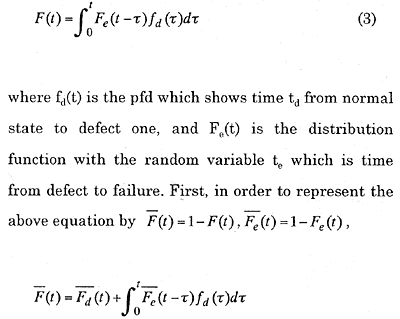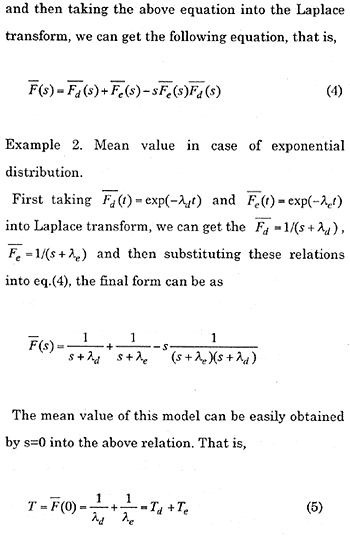where α = Tm / Te.
Thus, from the above relation, it makes clear that the success ratio p is controlled by the two elements, ie, Te, and Tm. Here if α = 1, p is 1/2, which means Te = Tm. Therefore, it can be found that for succeeding in the faiult diagnosis, the parameter α is better to be small as possible. It is very important that Tm is smaller than Te, or in other word, it is better that p is very close to 1.
2.3 Description of model [2]
(1) Basic maintenance model: It is the case where maintenance can be done in the system failure only, ie, CM. Its failure distribution F(t) is given by the following equation:


(2) Model A: In this model, it is possible to find defects/faults in the system instantly by monitoring before the system fails. Tva and wa mean the expected time interval of CM and PM respectively in this model, and these theoretical results are represented as
Tva =Td / (1-p)+Te
Twa = Td / p +(1/p - 1) Te (6)
(3) Model B: This model requests time to diagnose defect/fault. The expected time interval of CM Tvb and the expected time interval of PM Twb are given by the following relations:
Tvb =Td / (1-p)+Te
Twb = Td / p +(1/p - 1) Te (7)
Therefore, eqs. (6) and (7) are same relation each other.